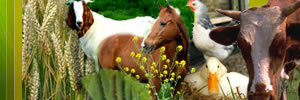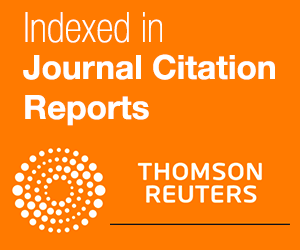FACTORS INFLUENCING BODY WEIGHTS AT DIFFERENT AGES IN THALLI SHEEP
A. Hussain, P. Akhtar*, S. Ali*, M. Younas**, M. Yaqoob**, M. E. Babar***, K. Javed*** and A. Shakoor
College of Veterinary and Animal Sciences, Sub Campus University of Veterinary and Animal Sciences, Lahore , Pakistan.
*Dept. Animal Breeding and Genetics, University of Agriculture, Faisalabad, Pakistan
**Dept. Livestock Management, University of Agriculture, Faisalabad, Pakistan.
*** Dept. of Livestock Production, University of Veterinary and Animal Sciences, Lahore, Pakistan.
Corresponding author’s email: drasghar_1@hotmail.com
ABSTRACT
Thalli is native sheep breed of Thall area of the Punjab, Pakistan. Data on 17030 birth records of 5421 Thalli sheep maintained at Livestock Experiment Station, Rakh Ghulaman, district Bhakkar during 1975-2004 were utilized in the present study with the aim to evaluate the performance of Thalli sheep in Pakistan. The genetic parameter estimation was performed using REML procedure by fitting an Individual Animal Model. Birth weight with an average of 4.11±0.82 kg, was significantly affected by year, type of birth, sex and age of the dam but season of birth was an in significant effect on the birth weight. Weight at 60 and 90-days of age averaged 11.58±3.57 and 14.92±4.56 kg, respectively. These weights were affected by year and season of birth, birth weight. Type of birth and sex had significant effect on weight at 60 days of age where as age of the dam had non-significant effect on weight at 60 days of age. Age of the dam significantly affected 90-day weight. Sex and type of birth had non-significant effect on 90 days weight. The weaning weight was 18.95±4.12 kg and was affected by year and season of birth, sex of lamb. No significant effects of type of birth, birth weight and age of dam on weaning weight were observed. The direct heritability estimate of birth weight was 0.067±0.01. The heritability estimates for 60- and 90-day weight were 0.116±0.01 and 0.18±0.01, respectively. The heritability estimate for weaning weight was 0.03±0.11. Genetic correlation between birth weight and weaning weight was negatively low with an estimate of 0.045±0.003. The low estimates of heritability for various performance traits indicated the presence of less additive genetic variance and large environmental variances. Hence improvement in the traits through selection may be limited.
Ker word: Thalli sheep, Pre-weaning body weights, Genetic factors, Pakistan.
DIVERSITY OF INDIGENOUS LAYERS IN COMPARISON WITH EXOTICS IN JORDAN
Raed M. Al-Atiyat*
Animal Production Department, King Saud University, Kingdom of Saudi Arabia
*Previous Address: Animal Science Department, Faculty of Agriculture, Mutah University, Mutah 61710, Al-Kark, Jordan .
Corresponding Author E-mail: ralatiyat@ksu.edu.sa; raedatiyat@gmail.com
ABSTRACT
Genetic variation of a hundred indigenous layers chicken and its genetic relatedness to twenty exotic layers chickens of each Pakistani chicken and commercial layers were assessed in Jordan using six microsatellite markers. the microsatellite markers showed an average allele number of 5.8 per locus, expected heterozygosity of 55.8% and high polymorphism of 54% in Jordan indigenous chicken. on the other hand, the genetic relatedness between the three breeds, that were originally independent, was described by pairwise genetic distance. the genetic distance was the shortest (0.135) between indigenous chicken and Pakistani chicken, revealing indigenous chicken was more closely related to Pakistani layer chicken than the commercial layers. this result confirmed the historical information about their common origin. long genetic distance (0.205) was showed between indigenous chicken and commercial layers. this might be a result of gene flow by crossing individuals of both sometimes ago. finally, the longest genetic distance (0.288) was found between commercial layers and Pakistani chicken. the overall results are valuable for sustainable genetic conservation program to reserve indigenous Jordan layer chicken for its unique genetic sources.
Key words: Indigenous and Exotic layers, Genetic diversity and distances, Microsatellite markers. |





